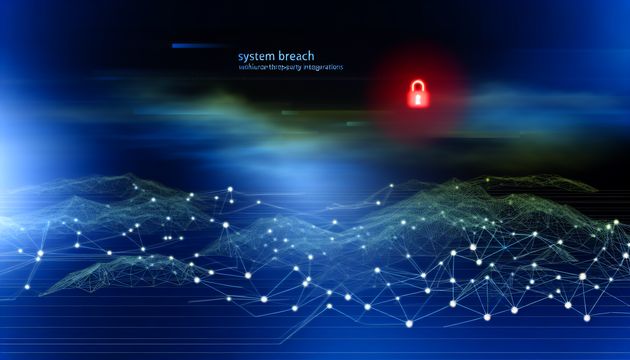
Medusind Breach Exposes Sensitive Patient Data: A Comprehensive Analysis
The recent data breach at Medusind, a prominent medical billing firm, has sent shockwaves through the healthcare industry, exposing the personal, financial, and medical data of over 360,000 individuals. This incident serves as a stark reminder of the vulnerabilities inherent in healthcare IT infrastructures and the critical need for robust cybersecurity measures. The breach has highlighted several key areas where healthcare organizations must focus their efforts to protect sensitive patient data. From strengthening cybersecurity frameworks to enhancing employee training and awareness, the lessons learned from the Medusind breach are invaluable for preventing future incidents. The breach underscores the importance of a multi-layered security approach, akin to fortifying a castle with moats, drawbridges, and guard dogs, to safeguard against potential threats. (Cybersecurity Dive)
Lessons Learned and Recommendations
Strengthening Cybersecurity Measures
The Medusind data breach is a wake-up call for healthcare organizations to beef up their cybersecurity game. Imagine leaving your front door wide open—this breach exposed the personal, financial, and medical data of over 360,000 individuals, showing just how vulnerable the company’s IT infrastructure was. Healthcare organizations need to lock down their systems with comprehensive cybersecurity frameworks. Think of it like a security system for your home: regular security audits, vulnerability assessments, and penetration testing are the equivalent of checking your locks and alarms. A multi-layered security approach, with firewalls, intrusion detection systems, and encryption protocols, is like having a moat, drawbridge, and guard dogs. (Cybersecurity Dive)
Employee Training and Awareness
Human error is like leaving your keys in the door—it’s a big reason data breaches happen. The Medusind incident shows why regular cybersecurity training and awareness programs are crucial. Employees need to be the first line of defense, spotting phishing attempts, securing their devices, and following data protection policies. By creating a culture of cybersecurity awareness, organizations can reduce the chances of breaches caused by human slip-ups. (The Lyon Firm)
Incident Response and Management
Medusind’s quick action to take affected systems offline and call in the cybersecurity cavalry shows the importance of having a solid incident response plan. Organizations should have a playbook ready, with clear communication channels, assigned roles, and regular drills to keep everyone sharp. A strong incident response plan is like having a fire drill—it minimizes damage and speeds up recovery. (Kantrowitz, Goldhamer & Graifman, P.C.)
Data Encryption and Access Controls
Encrypting sensitive data is like putting your valuables in a safe. The Medusind breach highlights the need for strong encryption protocols to protect patient data. Access controls are the key to the safe, ensuring only authorized personnel can get in. This means implementing role-based access controls, regularly reviewing who has access, and using two-factor authentication for extra security. (Information Security Buzz)
Regulatory Compliance and Data Protection
Healthcare organizations must play by the rules, like HIPAA, to protect patient data. The Medusind breach is a reminder to stay compliant with data protection regulations. Regular compliance audits are like health check-ups for your data security, identifying gaps and implementing fixes. Staying informed about regulatory changes and updating data protection policies is crucial to avoid legal headaches. (Daily Security Review)
Continuous Monitoring and Threat Detection
Think of continuous monitoring and threat detection systems as your security cameras. They help spot potential threats in real-time. The Medusind breach shows why healthcare organizations need advanced monitoring tools to detect anomalies and suspicious activities. By using AI and machine learning, organizations can boost their threat detection capabilities and nip security incidents in the bud. (Social Tube)
Data Minimization and Retention Policies
Data minimization and retention policies are like decluttering your home—only keep what you need. The Medusind breach highlights the risks of hoarding sensitive data. By minimizing data collection and implementing retention policies, organizations can reduce the impact of a data breach. Regular data purging and secure disposal of unnecessary information further enhance data protection. (Hack Reports)
Third-Party Vendor Management
Third-party vendors are like roommates—they can introduce security risks. The Medusind breach underscores the importance of managing these relationships carefully. Organizations should do their homework when selecting vendors, evaluating their security practices and compliance with data protection regulations. Contractual agreements should outline security requirements, and regular audits should verify vendor compliance. (SANS NewsBites)
Public Communication and Transparency
After a data breach, communication is key. Medusind’s prompt notification to affected individuals shows the importance of transparency. Organizations should have a communication plan ready, detailing how and when notifications will be sent. Transparent communication helps maintain trust and mitigate reputational damage. (The Lyon Firm)
Investment in Cybersecurity Infrastructure
The Medusind breach highlights the need for healthcare organizations to invest in strong cybersecurity infrastructure. This means allocating resources for advanced security technologies, hiring skilled cybersecurity professionals, and continuously updating security measures to tackle emerging threats. By prioritizing cybersecurity investments, organizations can strengthen their defenses against data breaches and protect patient information. (Cybersecurity Dive)
Final Thoughts
The Medusind data breach serves as a critical learning opportunity for healthcare organizations worldwide. It emphasizes the necessity of a comprehensive cybersecurity strategy that includes not only technological defenses but also human factors such as employee training and awareness. The breach has shown that quick and effective incident response can significantly mitigate damage, while transparent communication with affected individuals helps maintain trust. Furthermore, the importance of regulatory compliance and continuous monitoring cannot be overstated, as these measures are essential for identifying and addressing vulnerabilities before they can be exploited. By investing in advanced cybersecurity infrastructure and fostering a culture of security awareness, healthcare organizations can better protect patient data and prevent similar breaches in the future. (The Lyon Firm, Kantrowitz, Goldhamer & Graifman, P.C.)
References
- Cybersecurity Dive, 2025, source url
- The Lyon Firm, 2025, source url
- Kantrowitz, Goldhamer & Graifman, P.C., 2025, source url
- Information Security Buzz, 2025, source url
- Daily Security Review, 2025, source url
- Social Tube, 2025, source url
- Hack Reports, 2025, source url
- SANS NewsBites, 2025, source url



